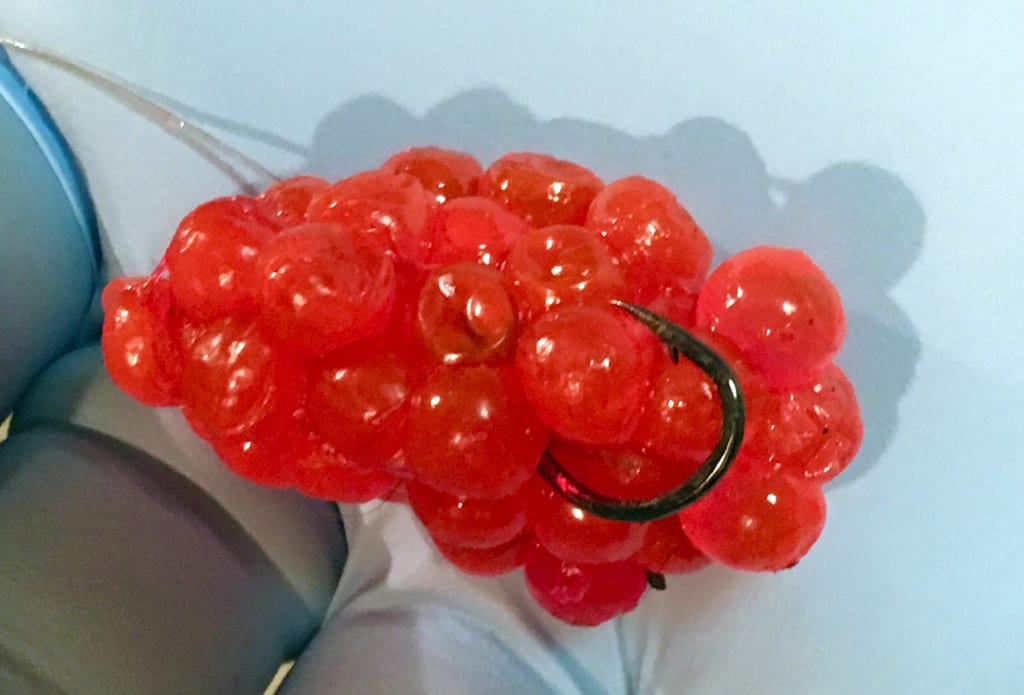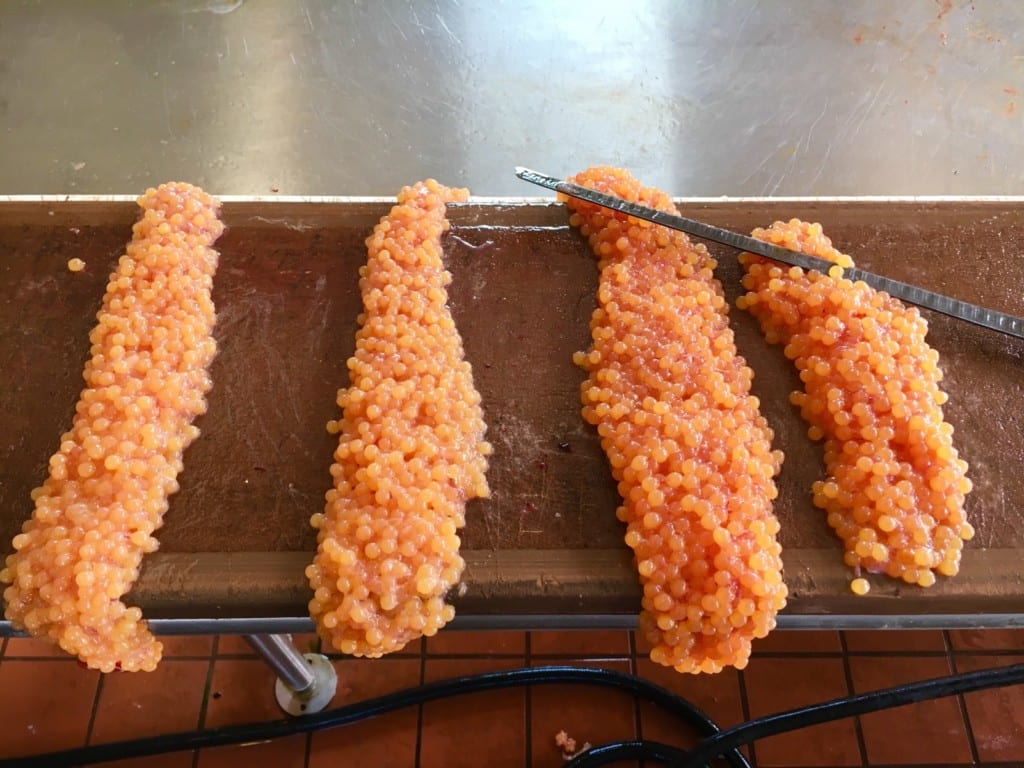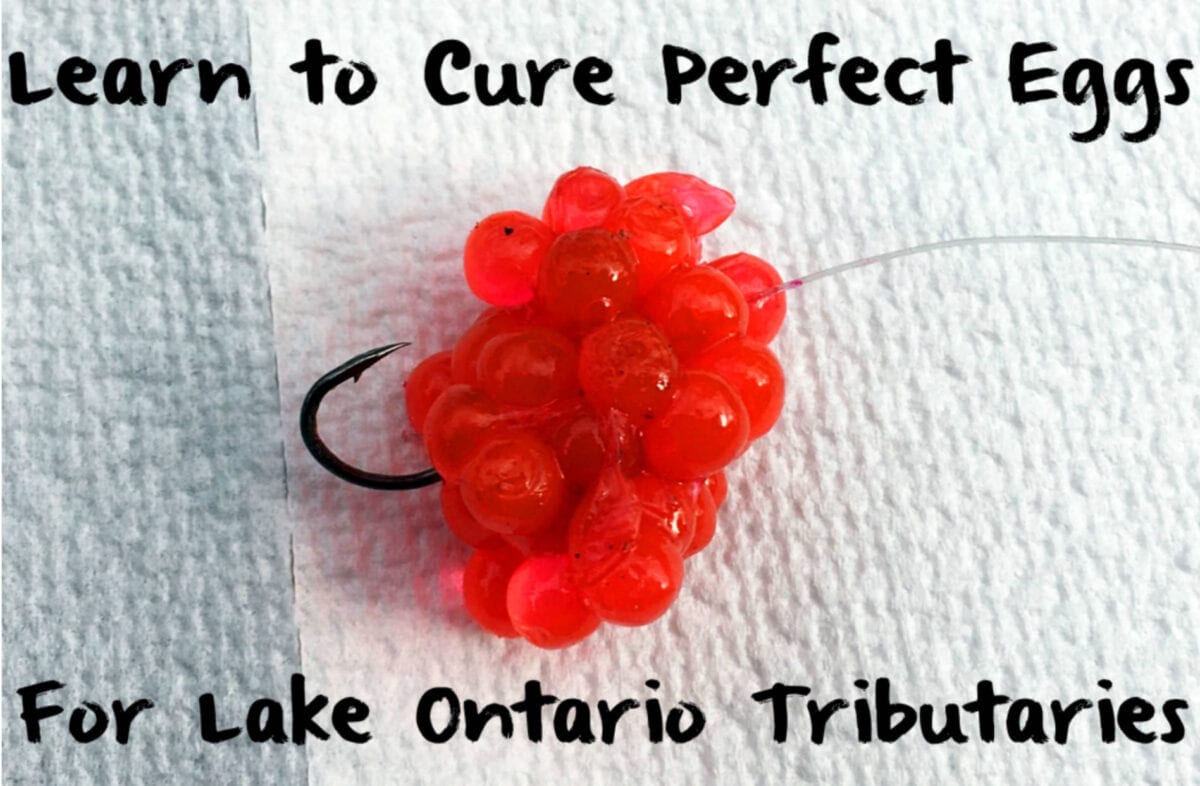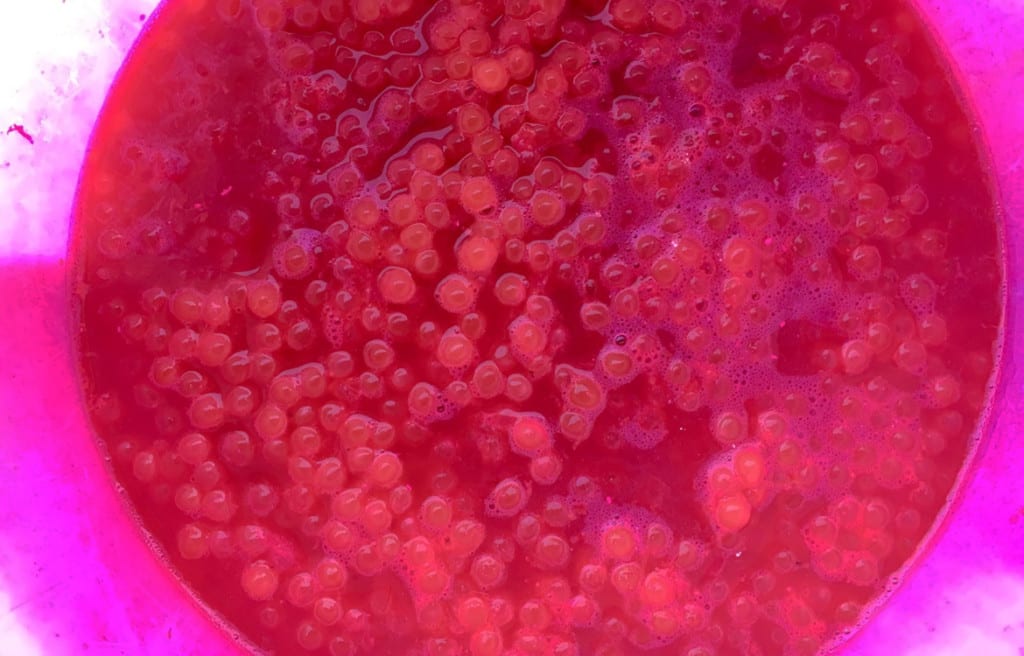Salmon
Learn to Cure Perfect Eggs: For Lake Ontario Tributaries
By: Ted Kessler
Our salmon have changed their habits this year. Traditionally, we aim to cure an orangey-pinkish egg, but this year they want more of a darker red/pink color. It’s been kind of interesting as all the guides are experiencing this. We all know how important it is to have well-cured eggs, but this season exact color has made a big difference.
In my blogs over the years we’ve discussed how to cure skein to give it the right smell, texture and color. This fall I’ve adjusted that slightly to give the salmon what they want. Here’s exactly what I’m doing to catch Niagara River salmon. This egg will catch fish in any Lake Ontario tributary although color may be adjusted depending on the tributary you are fishing. We will touch on that later.

In the recipe below you’ll see I use specific measurements. This recipe works on four-to-six pounds of eggs, basically two-to-three female salmon or four-to-six skeins.
The Lake Ontario Specific Cure
*As always it’s vital to bleed the fish out when you catch it. Blood residue isn’t good when left on the skein. It can contaminate the eggs. To end up with a well-cured egg you need to start with a good egg.
*Take the fresh skeins out of the salmon and butterfly them open.

*Rather than a straight powder cure I use a brine. I prefer a brine because it gives me a more consistent egg every time and being on the water daily with clients that has a lot of value. Something else to consider; in this brine the cure is absorbed evenly. This allows me to get a more brilliant egg, which is imperative in our clear water. We want to retain the skein’s color as long as possible.
Also in my experience the brined egg gives us a more rubbery egg, rather than a wet egg. This means it doesn’t milk as fast. For the Niagara River we want color more than we want the egg to milk. This is because our water is extremely clear. Sometime we can have up to 15 feet of visibility.

This brine can be used on any Lake Ontario tributary. Meanwhile the color of cure you use will change depending on your local river. For example, Niagara River water is Lake Erie water, which is zebra mussel clear. Other Lake Ontario tributaries are more tannic colored, which allows for a darker piece of skein. We have unique situations all across the tribs. A lot of the small tributaries up in Canada are large creeks that have sediment and tannic water whereas others are super clear. Dial in your skein to the water you are fishing.
Special Notes:
-For the Niagara River I’m mixing three colors. It’s a mixture of Pink, Red and Natural Fire Cure. This season it’s been a 60-20-20 mix, which means I’m using 60 percent red and 20 percent pink and 20 natural.
-If you are fishing a Lake Ontario tributary where the water isn’t as clear as the Niagara I would recommending 80-20 with red being the 80 and 20 for pink. You don’t even need the natural.
Here’s the process:
*In a two-gallon size container pour in two quarts of non-chlorinated water, this means river or spring water, not tap water. Then, add a cup of the cure mixture above. (This cup should be geared toward your local system. My mixture is for the Niagara River.) Add a cup of non-iodized salt, a cup of sugar and a cup of borax (or Natural BorX O Fire). Stir it thoroughly to blend ingredients together.
*Once stirred, add skeins. Leave them in the brine for one hour. That’s all you need. This cure will literally cure the eggs in one hour. Don’t leave them in there much longer because it will be too long.
*After an hour take the skeins out, put them in a strainer and drain them.
*After they drain put them in a Ziploc and refrigerate overnight. You want them to reabsorb the juices left in the bag, which they will during this process.
*After this, lay them out on paper towels for 12 hours so they firm up. They are now ready to fish.

Editor’s Note: Veteran guide Ted Kessler operates Rivermaster Charters. For more info on his guided Niagara River trips please visit http://rivermastercharters.com.









